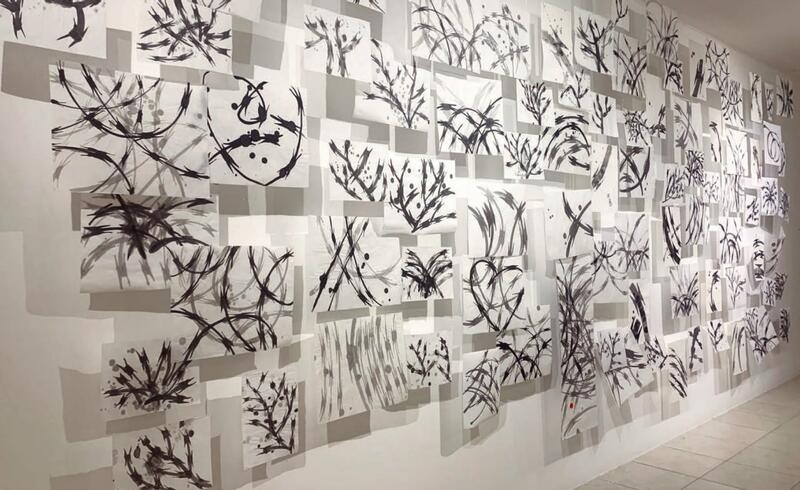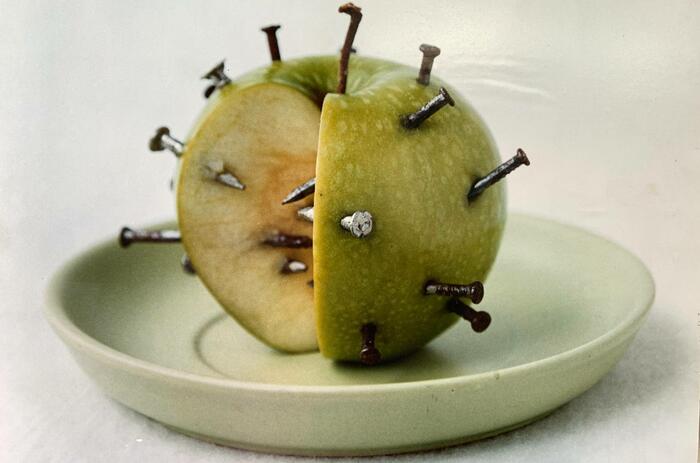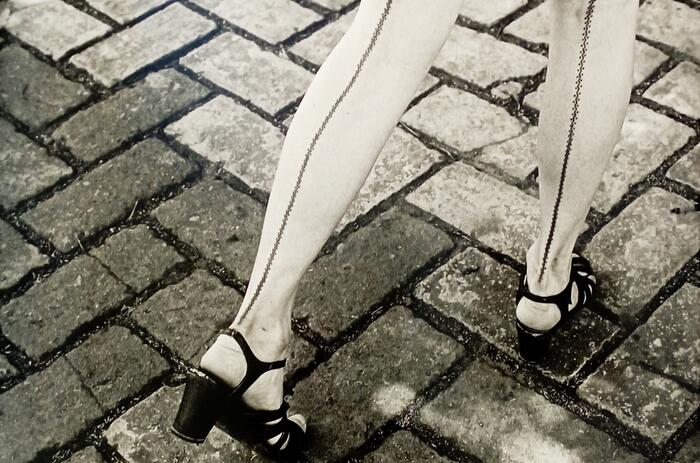PARADIGMATIC EXHIBITION OF RONALD MORÁN AT THE MARTE MUSEUM
Ronald Morán's individual exhibition, Por encima del Jardín (Above the Garden) (2021-2022), with which public activities were reinstated at the Marte Museum in San Salvador, has become a paradigmatic exhibition, not only as a new consecration of one of the Central American artists of greater international recognition, but as a sign of the vision of an institution that is committed to experimentation and accompaniment in the practices that link contemporary art and social imagination.

Eugenia Lindo, executive director of the museum, tells how, having scheduled a retrospective of Ronald Morán at the beginning of 2020 that would take place at the end of that year, the outbreak of the pandemic not only forced the temporary closure of the museum that lasted almost until mid of 2021, but also to rethink, throughout that period, the exhibition project: “At that time, in constant visits to Morán’s studio, we discovered his initial sumi-e sketches, inspired by such an emblematic material as the “razor” wire of the fences that proliferate in the country, in his book of drawings made during confinement. It seemed important to us to provide a record of what we experienced in El Salvador and in the world while we remained quarantined at home. What Ronald was seeing and expressing through his artistic creation and research cast a very particular perspective on how a situation of confinement was lived in one of the most violent countries in the world”. This is how the Museo Marte committed to accompany Ronald Morán in a creative process that, starting from a material object such as a razor, addresses, according to Lindo, “the violence that the country has experienced since the beginning of a Civil War in the eighties, proposing a reflexive vision of the society we have built”.
Arte al Día reproduces the presentation text in which critic and curator Adriana Herrera analyzes the scope of this paradigmatic exhibition.
Ronald Morán does not add something to the world that did not exist before: his gaze sinks into its shadowy places, into the sharpness that we avoid seeing and touching, and he not only makes it visible and tangible with that unmistakable aesthetic of paradox that gave him an international name, but transforms it with a subtle poetic that confronts the weight of reality with the lightness of imagination, but without taking its eyes off it. And, at the point of contemplating it, he discovers the interstice through which escapes, in some way (and in all its forms), hope.
Isolated during the pandemic, the artist saw from the window of his studio the “razor” [1] wire fence, rigid and spiny, “that hurtful curtain of metallic vines” that proliferates in Central America to the point that it has become commonly perceived as a natural extension of the garden. But this ultra-extended security mechanism is a form of social fear and isolation, an object-metonymy of the confinement that imprisons each territory. Morán took hold of his wounding points with his eyes and with the materials he had with him ─rice papers, notebooks, ink and brushes─ he set out to transform them using the ancient oriental legacy of sumi-e ink painting. Confronted with that sharp form, he represented it over and over again in instantaneous and volatile black strokes, which ritually turned the spikes into organic or stellar forms and opened the place of all enclosures to the vast space of transformations. That poetic operation preserves ─as the totality of his work ─ the precise reference of the real that asks us to contemplate and, at the same time, move from place.
The same artist who covered the spaces of domestic violence with very soft white cotton; that made existing or planned walls transparent, penetrable with the gaze; that has walked the roads with migrants while filming the sky without borders above their heads; and that has made us discover in the image of labyrinths of threads or invisible stairs that lead nowhere, the concrete metaphors of the social abysses in the center and south of the continent; brings our eyes closer to the spikes of the razor fences and performs before us the process of a transformation that materializes first in wonderful lines on notebooks painted as a diary, and then in hanging drawings, or in objects created from this cutting form and its reflection: the dangerous spiral unravels into modules from which organic things sprout, trees and vines, or stellar figures and “tropicalized” calligraphic signs, built with the transmuted spikes and their shadows, like encrypted messages from everything, beyond isolations, that we can imagine together.
Por encima del jardín brings together the multiple media ─drawing in ink, ceramics, sculpture, installation and video─ in which Ronald Morán fulfilled a process of artistic liberation: he displays on the walls the poetics of the moment of the strokes that make light what already exists; he transforms the sharp metal curtain into a barricade that we can surround while we decipher the way and the sense of projecting the sharp in soft shadows; and he confronts us with the surprise of refunds. The ugliness of the thorny fence causes the unexpected outbreak of the vine installed on the wall or the discovery ─suitable for social contemplation─ of a garden of metallic plants, as beautiful as they are sharp; and projects on the very structure of the circle of spikes a changing sky. “No form of fear ─he seems to write in his language in all media ─prevails over the vast space of the possible”.
[1] Even when it is a word not included in the dictionaries, I will name it in the rest of the text obeying speech, reproducing its common use, without writing the term in quotation marks.






